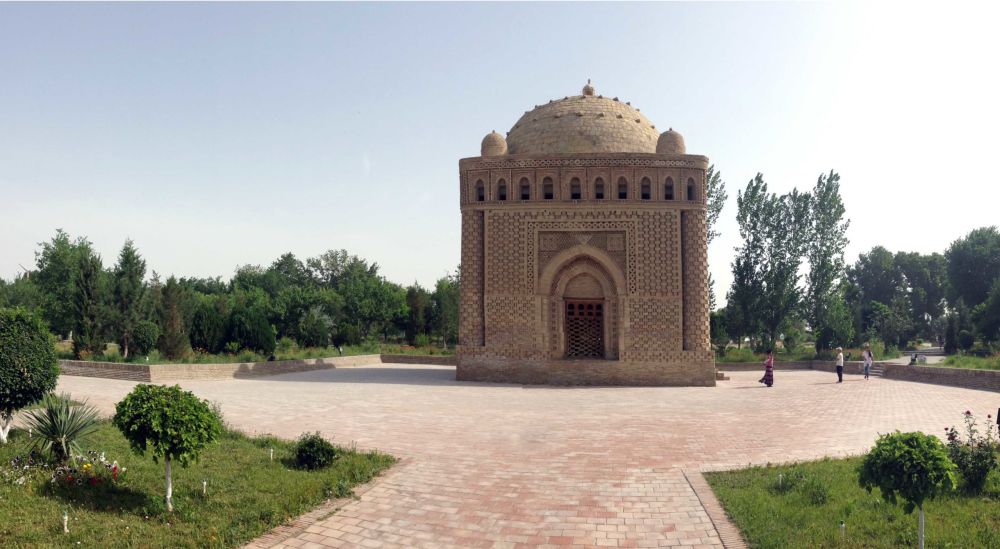

The Ismail Samani Mausoleum, located in the historical city of Bukhara, Uzbekistan, is one of the most important architectural monuments and a remarkable example of Islamic architecture in Central Asia. Dating back to the 9th and 10th centuries, this mausoleum is a tribute to the founder of the Samanid dynasty, Ismail Samani.
The mausoleum was built as a resting place for Ismail Samani and his family, marking a significant shift from traditional pre-Islamic rituals towards Islamic burial practices. It survived the Mongol invasion and has endured for over a millennium, thanks to its robust brickwork and architectural design. Its history is deeply intertwined with the city of Bukhara, which was a key center of Islamic culture and learning for many centuries.
Tourism at the Ismail Samani Mausoleum has gradually developed, especially after Bukhara became part of the Soviet Union. During the Soviet era, efforts were made to preserve and restore the ancient monuments, leading to increased interest in the region's historical and cultural significance.
With the declaration of Uzbekistan's independence in 1991, there has been a concerted effort to showcase the nation's rich historical heritage to the world. Bukhara, recognized as a UNESCO World Heritage site since 1993, prominently features the Ismail Samani Mausoleum, drawing in numerous tourists with an interest in history, architecture, and Islamic culture.
Today, the mausoleum serves as a prime example of early Islamic architecture, known for its symmetrical design and intricate brickwork. The site's popularity is also due to its condition, having been extremely well-preserved over the years. It attracts not only those interested in history and architecture but also travelers seeking to experience the ancient Silk Road's legacy.
In recent years, there's been a growing trend of cultural and experiential tourism, with travelers seeking authentic encounters and learning experiences. Consequently, tours to Bukhara now often include detailed presentations about the mausoleum's history, architecture, and significance. There's also a rise in sustainable tourism practices within Uzbekistan, as the country aims to preserve its historic sites while accommodating growing visitor numbers.
Visitors can enjoy the serene atmosphere of the mausoleum, assess the complex brick patterns that adorn its exterior, and ponder the mastery of ancient craftsmen. As tourism continues to develop in the region, the Ismail Samani Mausoleum remains a centerpiece in the array of historical treasures that Bukhara offers to the world.
For those planning to visit the Ismail Samani Mausoleum, it is advisable to check for any local guidelines or restrictions. The best times to visit are during the spring or autumn months when the weather is mild, allowing for a more comfortable exploration of Bukhara's outdoor sites.